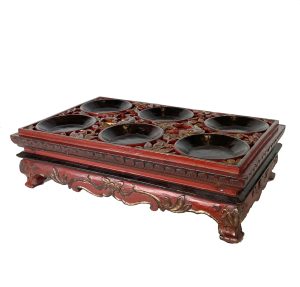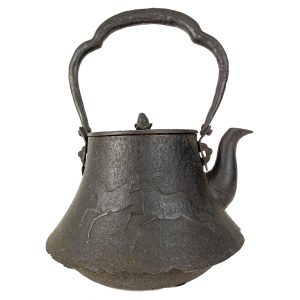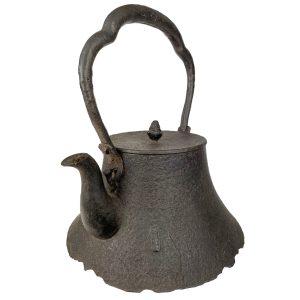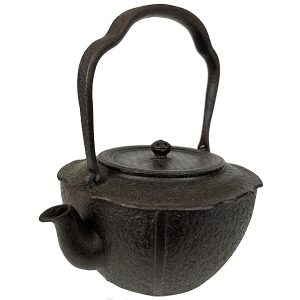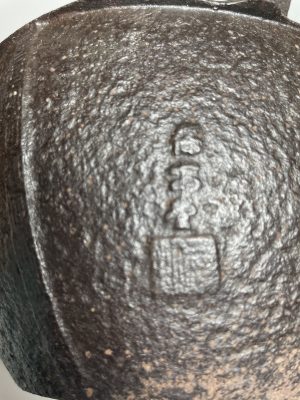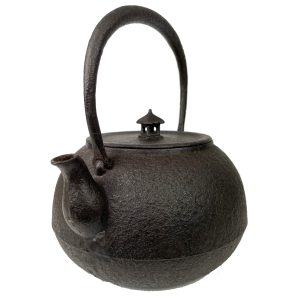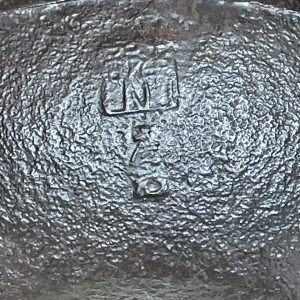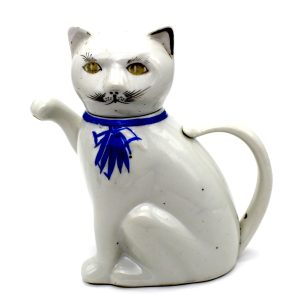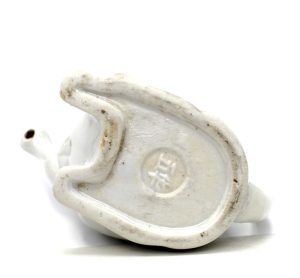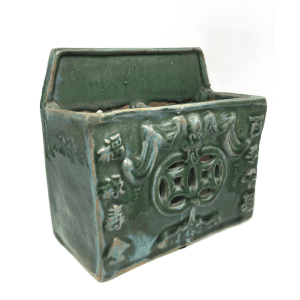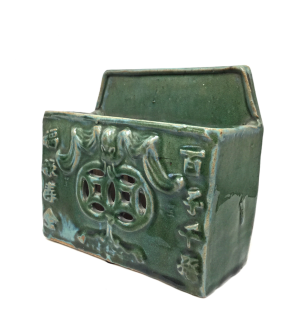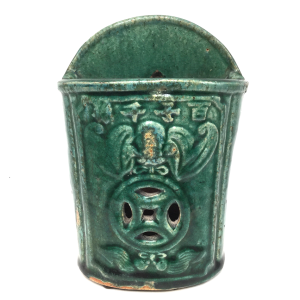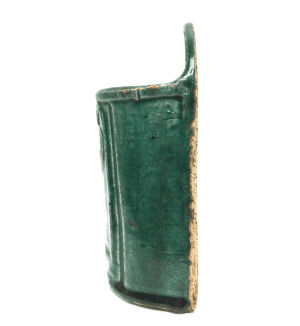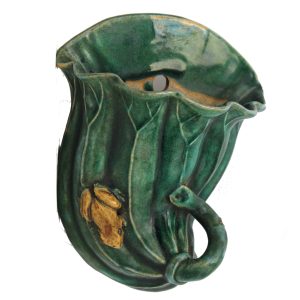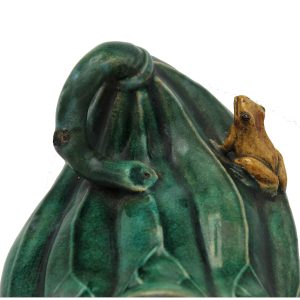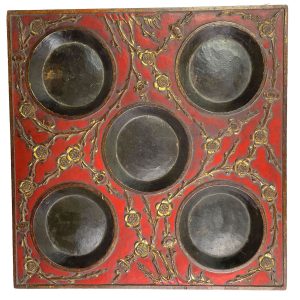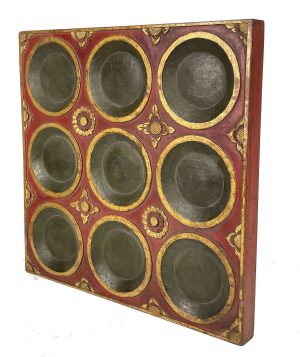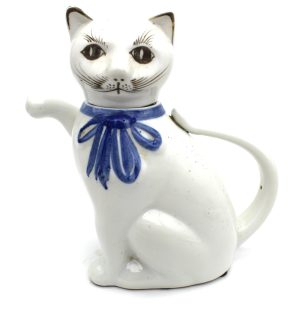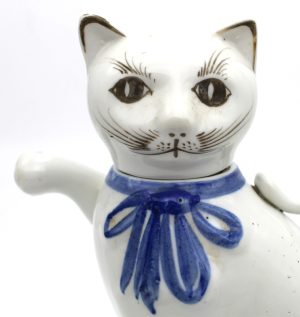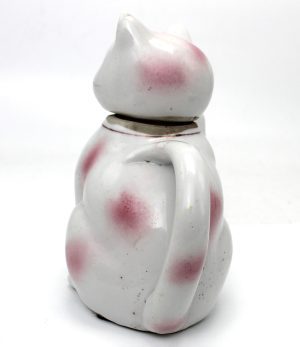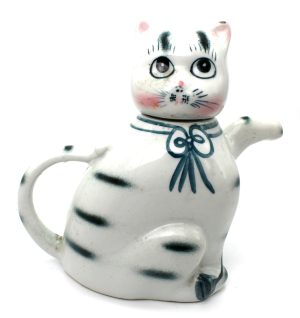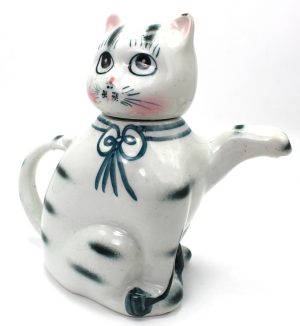Showing 1–12 of 18 results
-
Sale!

$475.00 Original price was: $475.00.$325.00Current price is: $325.00.
H: 5.625″ W: 27.875″ D: 9.75″ | FOR SHIPPING INFORMATION CONTACT US AT 213-568-3030 OR EMAIL [email protected]
This exceptionally crafted and beautiful footed confection mould was most probably a marriage gift from a wealthy family to the newlyweds as seen its symbolisms. It is elaborated and ornately decorated in vibrant reds and gilt with auspicious symbols for fidelity, fertility and happiness with lotuses and pods filled with seeds, bats, paired fish and intertwined vines representing a life pair, having sons, and other marriage wishes.
-
Sale!


$695.00 Original price was: $695.00.$550.00Current price is: $550.00.
Ht: 12.5″ W: 10″ D: 9.5″ | CALL 213-568-3030 OR EMAIL [email protected] FOR SHIPPING COST
Made in the Meiji era (1868-1912),this hand crafted antique Japanese cast iron tetsubin teapot has an unusual decorative handle and curved spout and has a beautiful relief design of galloping horses. Horses have been revered creatures in Japanese culture that embody grace, power and nobility. The knob on the lid probably represents a lotus, the Buddhist symbol of purity and enlightenment. As with all antiques, these pieces are purely decorative for display purposes only.
-
Sale!


$325.00 Original price was: $325.00.$275.00Current price is: $275.00.
Ht: 8.625” W: 7.5” D: 6.5” | CALL 213-568-3030 OR EMAIL [email protected] FOR SHIPPING COST
The hand crafted Tetsubin teapot displays simple yet elegant design: a scalloped top, gently curved handle, and short rounded spout, textured surface. The body is divided in 4 quadrants with meander border designs and the lid is has tiny diamond shaped indentations and is topped with a lotus shaped knob. A raised manufacturers seal on the back. Like all old Tetsubin cast iron kettles, it has rust on the bottom which can be removed by boiling green tea inside it, and is thus for display purposes only.
-
Sale!


$295.00 Original price was: $295.00.$245.00Current price is: $245.00.
Ht: 9.25″ W: 8″ D: 7.25″ | CALL 213-568-3030 OR EMAIL [email protected] FOR SHIPPING COST
Meiji hand crafted cast iron Tetsubin, simple yet elegant textured surface, unique shape top temple ornamental knob. Manufacturer’s seals on side. Perfect tea lovers gift, it is recommended for display only to enhance any kitchen.
-
Sale!


$145.00 Original price was: $145.00.$125.00Current price is: $125.00.
Ht: 6.25” W: 5.5” D: 3.25” | FREE SHIPPING WITHIN CONTINENTAL U.S.
The Chinese characters within a circled seal in the mold on the bottom indicate this teapot is an antique. As the thin ribbon blue collar as wishes for long life, it is a perfect birthday gift. Recommended for decorative use only.
-
Sale!


$185.00 Original price was: $185.00.$135.00Current price is: $135.00.
H: 7.125″ W: 8.375″ D: 3.75″ | FREE SHIPPING WITHIN CONTINENTAL U.S.
Shiwan 2 part chopsticks holder with top holes for hanging and bottom ones for drainage. Chopsticks were wedding gifts from mothers to daughters with auspicious wishes: sons as soon as possible, blessing for prosperity, happiness and fertility, life-giving rain and abundance.
-
Sale!


$115.00 Original price was: $115.00.$95.00Current price is: $95.00.
H: 7.375″ W: 5.125″ D: 2.5″ | FREE SHIPPING WITHIN CONTINENTAL U.S.
Chopsticks are ubiquitous in Chinese culture, and are often included in a bride’s dowry as a wish for a speedy arrival of many sons. This Shiwan ware green glazed wall pocket chopsticks holder has characters wishing for many sons and grandsons and an upside down bat holding a coin for “blessings in front of your eyes.”
Decorative utilitarian Shiwanware pieces are recognized for their fine modeling, vivid expression, and colorful apple-green and drip glazes. Chopsticks were commonly stored in wall pockets with a hole for mounting. Covered with auspicious symbols, they were often part of a bride’s dowry as “chopsticks” is a pun for “speedy arrival of sons.”
-
Sale!


$285.00 Original price was: $285.00.$225.00Current price is: $225.00.
H: 8.25” W: 6.75” D: 3.5” | FREE SHIPPING WITHIN CONTINENTAL U.S.
Wall pockets are used to hold chopsticks and flowers to bring good fortune. This Shiwan pocket has frog and a lotus that together symbolize nurturing energy and transformation. Great cozy accessory for feng shui and a wonderful wedding gift.
-
Sale!


$395.00 Original price was: $395.00.$295.00Current price is: $295.00.
Ht: 1.25″ W: 15″ D:14.87″ | CALL 213-568-3030 OR EMAIL [email protected] FOR SHIPPING COST
This intricately hand carved gold and silver platter with indentations on both sides was used to make confections called sweetmeats eaten at festivals, holidays, and other key celebrations. The round molds symbolize the moon and cohesion of the family. The 5-petal plum blossoms attached to vines symbolize purity and endurance, as well as the coming of spring, renewal, and longevity. The multiple seeds are a wish for fertility and sons, and thus this mold may have been a holiday and/or marriage gift to a young couple.
-
Sale!


$145.00 Original price was: $145.00.$125.00Current price is: $125.00.
H: 7” W: 7” D: 3.5” | FREE SHIPPING IN CONTINENTAL US
Porcelain cat teapot removable head, sinuous tail handle. Beautifully hand-painted whimsical ribbon-like blue collar, dangling ornamental bow, and the black accents. Likely Qing Dynasty circa 1900-1920.
-
Sale!


$135.00 Original price was: $135.00.$115.00Current price is: $115.00.
H: 5.5″ W: 3″ D: 3.375″ | FREE SHIPPING WITHIN CONTINENTAL U.S.
Antique porcelain teapot, removable head, tail handle, and spout paw. Hand painted design with ribbon-like gold collar and dangling ornamental bow symbolizing long life. Great gift, recommended for decorative use only.
-
Sale!


$145.00 Original price was: $145.00.$125.00Current price is: $125.00.
H: 7” W: 8” D: 3.625” | FREE SHIPPING WITHIN CONTINENTAL U.S.
Rotund porcelain teapot with removable head. With her pink highlights, round wide eyes, feathered brows and 3 part ribbon with bow she appears to be an affectionate female lap cat.
End of content
End of content

